Did you know growing your own herbs can save you up to $100 a year? It’s easy to turn your kitchen into a lush herb garden, even if you’re on a tight budget. This guide will help you create a thriving indoor herb garden. You’ll get fresh flavors all year without spending a lot.
Key Takeaways
- Maximize your herb garden’s light exposure to ensure healthy, flavorful growth
- Utilize cost-effective grow lights to supplement natural sunlight
- Select herbs that thrive in containers and have similar watering needs
- Explore budget-friendly planter options, including DIY alternatives
- Maintain the right soil moisture and fertilization schedule for optimal harvests
Importance of Light for Indoor Herb Gardens
Creating a successful indoor herb garden depends on knowing the herb light requirements. Herbs need sunlight to grow and develop well. It’s important to give them the right amount and type of light for them to grow and taste great.
Understanding Herb Light Requirements
Most herbs do well with 4-6 hours of direct sunlight per day. But, each herb has its own light needs. Full sun herbs like to be in south- or west-facing windows for lots of sunlight. Partial sun/shade herbs prefer north- or east-facing windows for softer light.
If your herbs look tall and thin, or if new growth is weak, they might not be getting enough light. On the other hand, if leaves look bleached or burned, they’re getting too much light.
“Proper light exposure is the foundation for healthy, flavorful herbs. Pay close attention to your plants’ needs to ensure they thrive indoors.
Knowing what light your herbs need is key to a great indoor garden. By placing your plants in the best window spot, you help them grow well. This way, you’ll have a steady supply of fresh, fragrant herbs.
Using Grow Lights for Indoor Herb Gardens
During the winter, when sunlight is hard to find, indoor herb garden grow lights come to the rescue. Choose LED grow lights for herbs that fit on a shelf or ledge over your herbs. Make sure they have a timer or remote control for easy use and to keep your herbs well-lit.
These full spectrum light for herbs grow lights should be on for 12-14 hours a day. This gives your indoor herbs the light they need to grow well. With the right grow lights, your herbs will thrive, even in winter.
| Grow Light Feature | Benefit for Indoor Herb Gardens |
|---|---|
| Full-Spectrum LED | Mimics natural sunlight, promoting healthy herb growth |
| Adjustable Positioning | Allows you to direct light precisely where your herbs need it most |
| Automatic Timer or Remote Control | Simplifies the process of ensuring your herbs receive the proper light exposure |
“Grow lights are an essential tool for maintaining a thriving indoor herb garden, especially during the winter months when natural sunlight is limited.
Selecting the Right Herbs for Container Gardening
When planning your indoor herb garden, think about the water needs of each herb. Grouping plants by their moisture preferences helps ensure they grow well together. This makes for a healthy container garden.
Grouping Herbs by Water Preferences
Herbs like rosemary, oregano, marjoram, lavender, sage, and thyme love dry soil. Put them on the planter’s edges where they dry out first. These drought-tolerant herbs do well in dry conditions and need less water.
Herbs that prefer moist soil, such as dill, cilantro, parsley, and basil, should be together. These water-loving herbs need regular watering to stay damp.
Planting Mint Separately
Mint grows fast and can spread too much. It might harm other herbs in your container garden. So, keep mint in its own container or on the planter’s edges to control it.
Knowing which herbs need more or less water helps you create a beautiful indoor herb garden. This way, you meet the needs of all your plants.
Space-Saving Tips for Small Indoor Herb Gardens
Living in a small space doesn’t mean you can’t have a garden. You can make a small indoor herb garden that uses every inch well. Think vertically and be creative with how you plant.
Using vertical supports is a great way to save space in indoor herb gardening. Look into tiered planters or wall-mounted systems. These let you stack your herbs without taking up much floor space. They also make sure each plant gets enough light and air.
Some herbs like mint and basil grow up rather than out. By planting these compact herb planting options together, you can make a beautiful and productive space-saving herb garden. This looks good and works well.
For a vertical herb gardening setup, you should pick the leaves often. This helps the plants grow more and keeps them healthy. With some creativity and smart planting, you can have a great small indoor herb garden even in tiny spaces.
Herbs are the ultimate space-saving plants for the indoor gardener. With a little planning, you can enjoy a bountiful harvest of fresh flavors right in your own home.”
Grow Herbs Indoors on a Budget
Starting an indoor budget-friendly herb garden doesn’t have to be expensive. You can use inexpensive herb containers and DIY herb planters to grow your favorite herbs. Here are some thrifty tips to help you grow herbs indoors without spending a lot.
Using Inexpensive Containers for Herb Planters
You don’t need fancy pots for herbs. Look around your home for items that can be used as inexpensive herb containers. Use clay pots, recycled cans, or old mugs to make your thrifty indoor herb growing project look great and work well.
DIY Herb Garden Containers and Planters
For a budget-friendly option, try making your own DIY herb planters. Check your garage or thrift stores for salvaged wood, pallets, or hanging baskets. These can be turned into unique containers for your budget-friendly indoor herb garden. Be creative and enjoy the satisfaction of making your own herb-growing setup.
“Growing herbs indoors on a budget is a rewarding way to enjoy fresh flavors all year round. With a little creativity and resourcefulness, you can create a thriving budget-friendly indoor herb garden that fits your lifestyle and your wallet.”
Choosing the Best Potting Mix for Indoor Herbs
Starting an indoor herb garden is rewarding, but picking the right potting mix is key. The mix you choose affects your plants’ health and vitality. For growing herbs in containers, the right mix is crucial.
Don’t use regular garden soil for your indoor herb garden. Go for a mix that drains well and is full of nutrients, made just for container gardens. These mixes help your herbs grow strong and healthy indoors.
When picking a potting mix for your indoor herb garden, look for these ingredients:
- Perlite or vermiculite for excellent drainage
- Compost or aged bark for nutrient-rich organic matter
- Peat moss or coco coir to retain moisture
- Limestone or dolomite to regulate pH levels
Choosing the right potting mix sets your indoor herb garden up for success. With the right soil, your herbs will grow well and give you lots of fresh herbs.
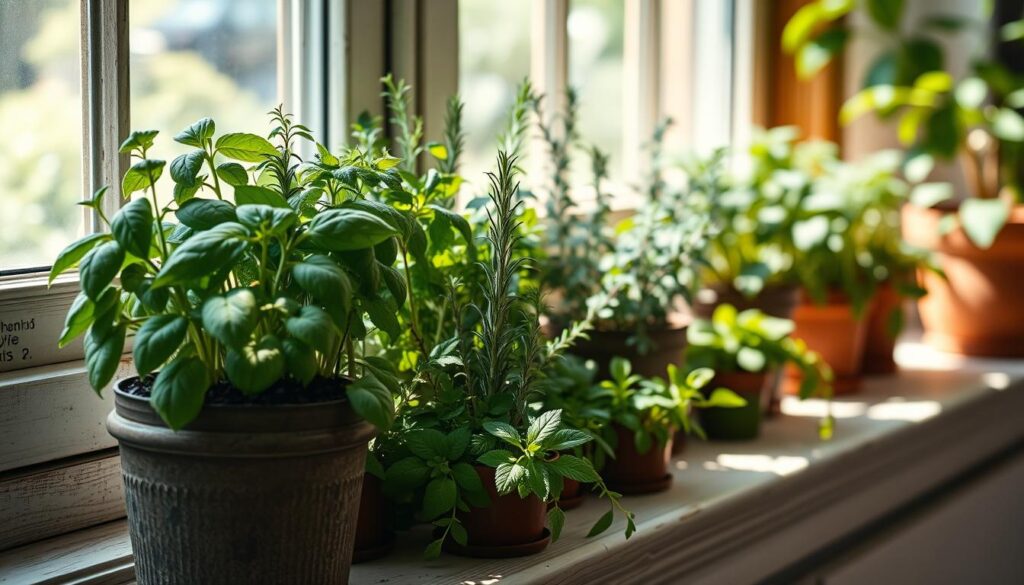
“A thriving indoor herb garden starts with the right potting mix. Invest in a quality blend and watch your herbs flourish!”
Watering and Fertilizing Your Indoor Herb Garden
Keeping your indoor herb garden healthy means paying attention to watering and fertilizing. Make sure the soil stays moist but not too wet. This balance is key for healthy growth and stops root rot.
Keeping the Soil Moist but Not Soggy
Water your herbs when the top inch of soil feels dry. This is usually every 2-3 days, depending on the temperature, humidity, and pot size. Don’t let the soil dry out completely, as it can harm your herbs.
But, don’t overwater either. Wet soil lacks oxygen for the roots and can cause rot and disease. Check the soil by feeling its moisture. If it feels heavy, wait before watering again.
Give your herbs a balanced, water-soluble fertilizer every 2-4 weeks. This helps them get the nutrients they need in a small space. Just follow the fertilizer package for how to mix and apply it.
| Watering Tips | Fertilizing Tips |
|---|---|
|
|
By finding the right balance between watering indoor herb garden and fertilizing indoor herb garden, you can keep your herbs healthy. This ensures your indoor herb garden flourishes all year.
Maximizing Harvests from Your Indoor Herb Garden
To keep your indoor herb garden full of fresh herbs, you need to harvest them often. Cutting off leaves or stems makes them grow more. Always cut just above healthy leaves or the base to help the plant grow back. This way, you’ll get more herbs from your garden.
Techniques for Frequent Harvesting
Using the right ways to harvest can really help your indoor herbs grow better. Here are some tips to get more herbs:
- Snip off leaves or stems regularly, leaving at least 1-2 inches of growth on the plant.
- Harvest herbs in the morning when the leaves are most turgid and flavorful.
- Use clean, sharp scissors or pruners to avoid damaging the plants.
- Harvest only the amount you need, leaving the rest of the plant intact.
- Gently pinch or cut the stems just above a set of healthy leaves to encourage bushier growth.
By following these easy harvesting indoor herbs tips, you can have a steady supply of fresh, tasty herbs. You’ll get more herbs and enjoy the benefits of frequent herb harvesting.
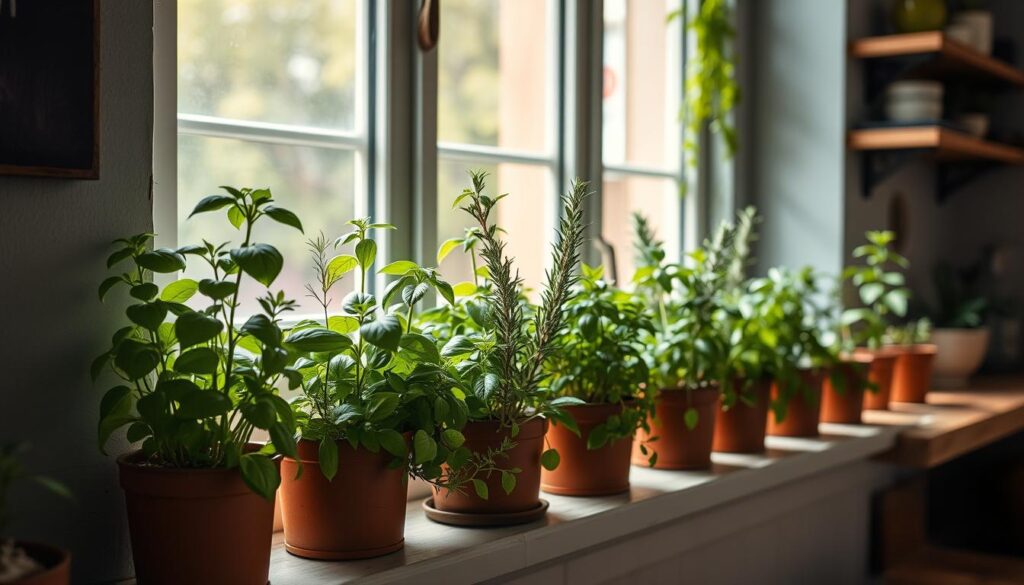
“The key to a thriving indoor herb garden is frequent, mindful harvesting. With the right techniques, you can maximize your yields and savor the flavors of homegrown herbs all year round.”
Pest Control for Indoor Herb Gardens
Keeping your indoor herb garden healthy means watching out for pests. Even at home, pests like aphids, spider mites, and whiteflies can harm your herbs. It’s important to act fast if you see pests to stop them from taking over.
Using a mix of water and mild soap is a good way to fight pests. Just mist your herbs with this solution to get rid of many pests without harsh chemicals. Make sure to spray all parts of your plants, including the underside of leaves.
| Pest | Identification | Organic Control |
|---|---|---|
| Aphids | Small, pear-shaped insects that come in a variety of colors | Soap and water spray, introduction of beneficial insects like ladybugs |
| Spider Mites | Tiny, web-spinning mites that feed on plant leaves | Frequent misting, introducing predatory mites |
| Whiteflies | Small, white, moth-like insects that cluster on the undersides of leaves | Sticky traps, insecticidal soap, introduction of parasitic wasps |
Stay alert and deal with pests quickly to keep your indoor herb garden healthy all year. With some effort and natural methods, you can keep your herbs safe from pests and enjoy them more.
Conclusion
Starting an indoor herb garden on a budget is rewarding and practical. It lets you enjoy fresh flavors all year. By knowing what herbs need in terms of light and using grow lights when needed, you can make a great herb garden at home. With some smart choices and a bit of care, you’ll soon be enjoying delicious, homegrown herbs in your cooking.
Whether you’re experienced or new to gardening, growing your own herbs indoors is a unique joy. You’ll always have flavorful ingredients on hand and feel proud of your green space. This article has given you the knowledge and tools to start a budget-friendly indoor herb garden. Now, you can enjoy the benefits of fresh, homegrown herbs.
As you start this gardening adventure, remember to enjoy the journey. Try out different herbs and celebrate your small wins. With patience and effort, your indoor herb garden will thrive. It will give you a steady supply of cooking inspiration and a link to nature, all from your home.
FAQ
What are the light requirements for growing herbs indoors?
How can I use grow lights to support my indoor herb garden?
How do I choose herbs that will grow well together in a container?
What are some tips for growing an indoor herb garden in a small space?
How can I create an indoor herb garden on a budget?
What type of potting mix should I use for my indoor herbs?
How do I properly water and fertilize my indoor herb garden?
How can I maximize the harvests from my indoor herb garden?
How do I prevent and manage pests in my indoor herb garden?
Source Links
- How to Start an Herb Garden Indoors • Gardenary – https://www.gardenary.com/blog/how-to-start-an-herb-garden-indoors
- How to Grow Lots of Herbs in a Small Space • Gardenary – https://www.gardenary.com/blog/how-to-grow-herbs-in-a-small-space
- What are some tips for making a small indoor garden of herbs with little space and money? Can clay pots be used for each plant instead of… – https://www.quora.com/What-are-some-tips-for-making-a-small-indoor-garden-of-herbs-with-little-space-and-money-Can-clay-pots-be-used-for-each-plant-instead-of-buying-expensive-containers


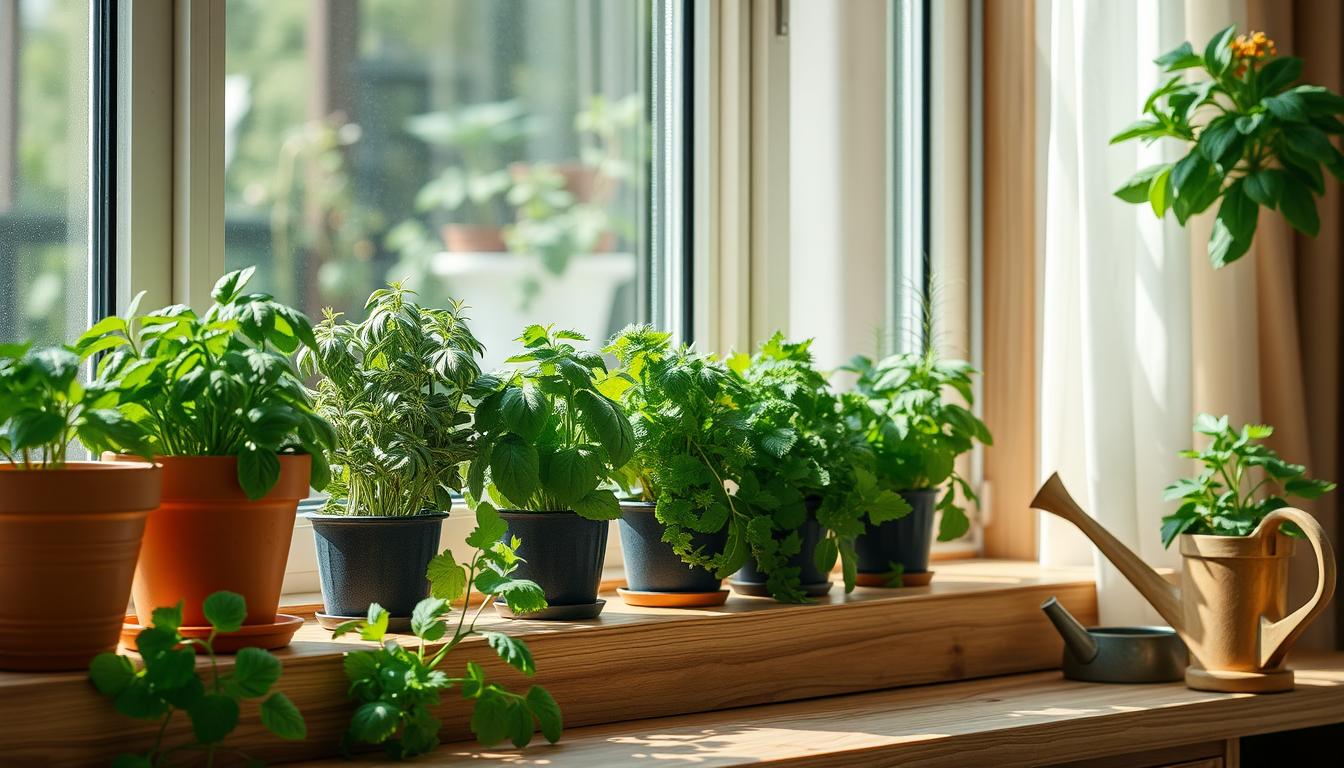
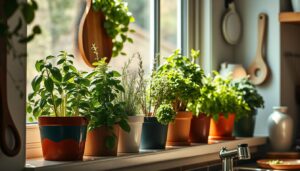
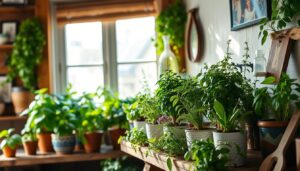
Pingback: The Ultimate DIY Indoor Herb Garden Guide: Step-by-Step Instructions